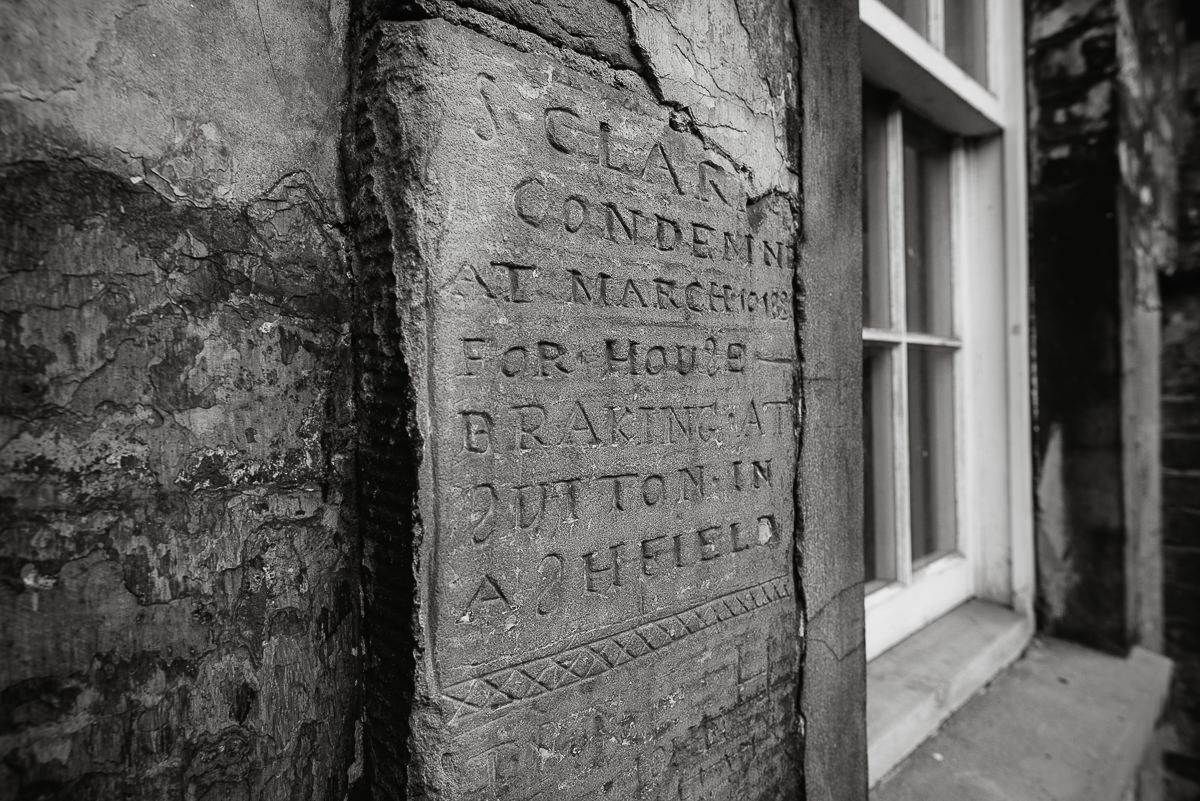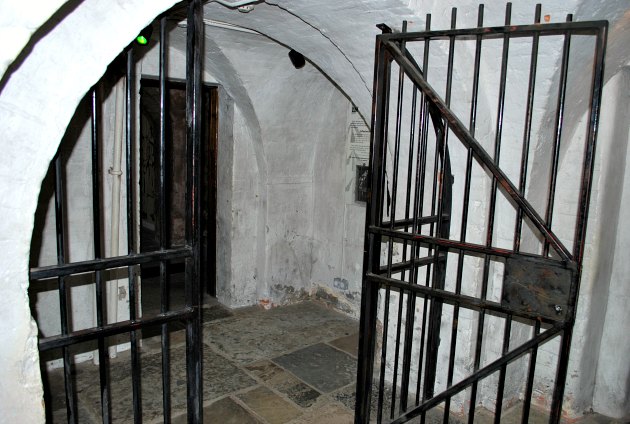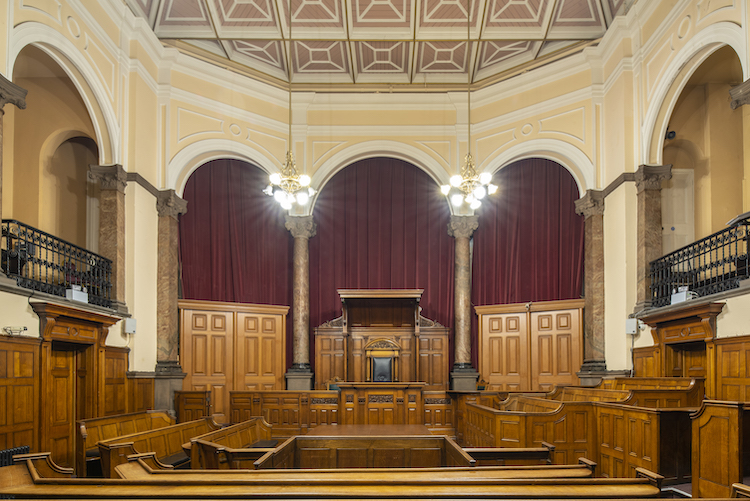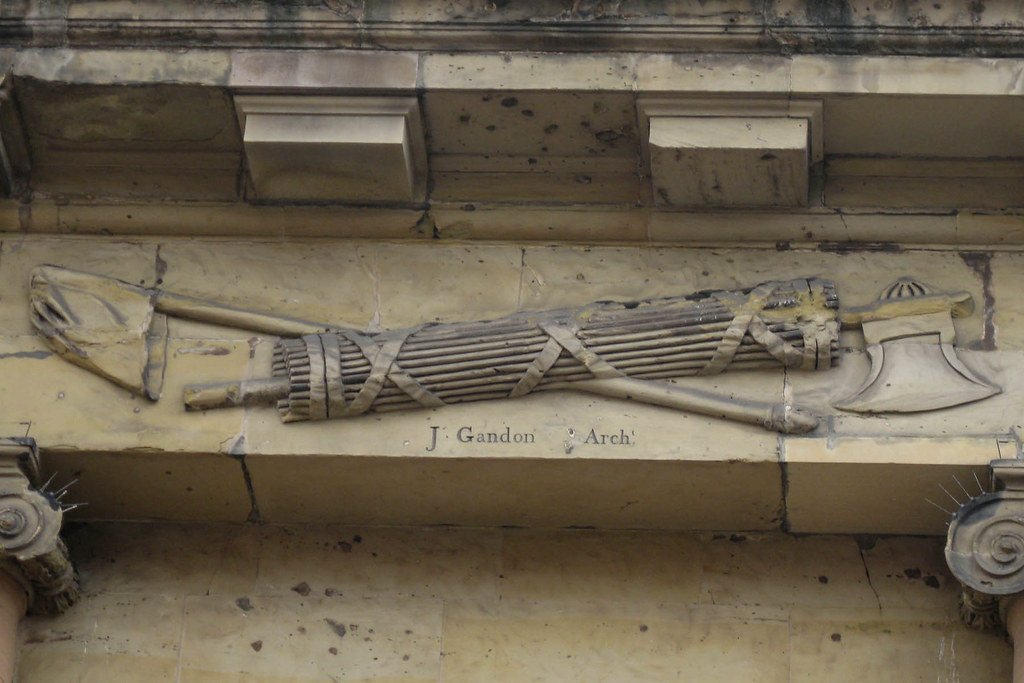Introduction
With the spooky season fast approaching, we thought we would make this instalment of ‘Famous Nottingham Buildings’ a bit … spooky. So, let’s take a look at one of the most haunted buildings in Nottingham (and arguably the country) … The National Justice Museum, formerly the Galleries of Justice.
The National Justice Museum’s gruesome past leads many to believe there are tormented souls still lingering around the building. It was the only place in Britain where you could be tried, convicted and sentenced all under the same roof- in fact, executions by hanging took place on the entrance steps very often!

History
The building stands on a site which can be dated back to 600AD – archaeologists have discovered clues within the sandstone caves underneath the building to suggest the site has been linked with imprisonment and punishment since these early times.

Written records show that the site was used as a court from 1375 and then also as a prison from 1449. In 1876, major improvements were made to the front of the building, which was redesigned in a style described as ‘Italianate’ by Mr. Bliss-Sanders of Nottingham, however, within a few weeks, a fire broke out and nearly destroyed all of the newly completed work.
To name a few of the iconic rooms, within the building you will find; the Courts, the Night Cell, Men’s Cells, Women’s Washrooms, Chapel, Caves and even the terrifying Condemned Cell where a prisoner’s last hours were spent before succumbing to the noose as dawn broke.

The Hall was re-built between 1769 – 1772 and designed by architect James Gandon of London, at a cost of £2,500 – equivalent of around £459,395.16 in 2020. Building works were completed by Joseph Pickford of Derby. Atop of the building, lies an inscription which reads: This County Hall was erected in the year MDCCLXX and in the tenth year of the reign of His Majesty George III.
The building was fronted by an iron palisade to help control unruly crowds during a public hanging. Additional wings were added between 1820 and 1840 then, the judges’ retiring room, barristers’ robing room and an office for a clerk were added in 1844.
The Last Hanging
The last public execution was held in 1864 when Richard Thomas Parker was hanged. The Daily Guardian of 25th July, 1864 reported: ‘Richard Thomas Parker, 29 was indicted on a charge of feloniously shooting Samuel Parker, with intent to murder him at Fiskerton on 29th March. He was also charged with feloniously shooting at Elizabeth Parker, his mother, with intent to murder her on the same day.’

Other Details
On the outside of the building you will see the fasces – a bound bundle of wooden rods, sometimes including an axe, which were ancient Rome’s symbol of authority.
And this carving, showing a bundle of birch rods around an axe bound with leather straps, would have been a signal of law and order when the Shire Hall was rebuilt on this site in 1770.
(As an aside, the fasces became the symbol of the Fascists in Italy in the early half of the 20th century; which is why its use subsequently fell out of favour in England.)
Closing the jail
In 1878, the Victorians closed the jail as part of prison reforms, due to the appalling conditions in which prisoners were held. Today, the museum attracts visitors from far and wide, who come to experience the spooky goings on and learn about how many met their fate within the ground of the museum.
Spooky Occurrences
Staff and visitors of the museum have reported sightings of ghosts and apparitions. This includes frequent reports of soldiers being seen on the steps of the main entrance hall and a lady pushing a pram as if in a trance. Some allege that the court rooms themselves have produced many light anomalies and there have been sights of people overlooking the balconies.
Some visitors of the ghost hunts that are organsied by the museum describe hearing sounds they “would never forget” and the “feeling of being watched”.
To visit the National Justice Museum and to see what events they’re running you can visit their website here.










